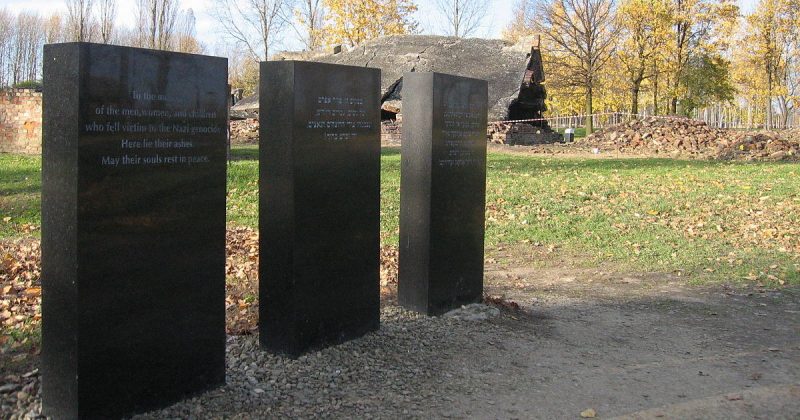Little did the developers of 3-D virtual reality think their technology would be instrumental in seeing justice meted out to Nazi war criminals, specifically those who participated in the genocide of millions of Jews and others at Auschwitz.
So accurate is the rendition that even where trees once stood, a user wearing the goggles can determine by changing the vantage point if a person’s view was blocked.
Often, there have been cases where suspects said they were employed at Auschwitz but were unaware of what was occurring, explained Jen Rommel, leader of the federal office examining Nazi war crimes offenses.
The legal question concerns intent: did a suspect know that people were being executed by either gas or a bullet? The 3-D model helps answer that dilemma.
The rendition of the death camp was created by imaging expert Ralf Breker of the Bavarian state crime office.
Virtual reality has more precision than Google Earth, he said.
The project was spurred by the case of Johann Breyer, a retired machinist born in Czechoslovakia, accused of collusion in the murder at of 216,000 Hungarian Jews.
However, the almost 90-year-old naturalized American died in June 2014, only a few hours before a US court permitted his extradition.
A more advanced model had been employed in the trial of former SS guard Reinhold Hanning. He was convicted of collusion in the murder of 170,000 at Auschwitz. He received a five-year sentence.
To produce the computer-made hell that was Auschwitz, Breker used resources from the surveyor’s office in Warsaw and over 1,000 photographs from the period. Subsequently, he visited the former concentration camp in 2013.
His team investigates murders so they often see distasteful things, but after returning to his hotel room each evening after a foray to Auschwitz, he was shattered, he explained.
He related the story of the May to July 1944 time period when 438,000 Hungarian Jews were forcibly sent to Auschwitz-Birkenau, The Guardian reported.
So much high heat was produced that cracked the chimneys, prompting the SS to incinerate bodies outside the crematoria on pyres.
The SS then essentially made drains for fat collected from the corpses, which could be a resource to fuel the fire for additional victims, he said. There are no words to express the horror.
